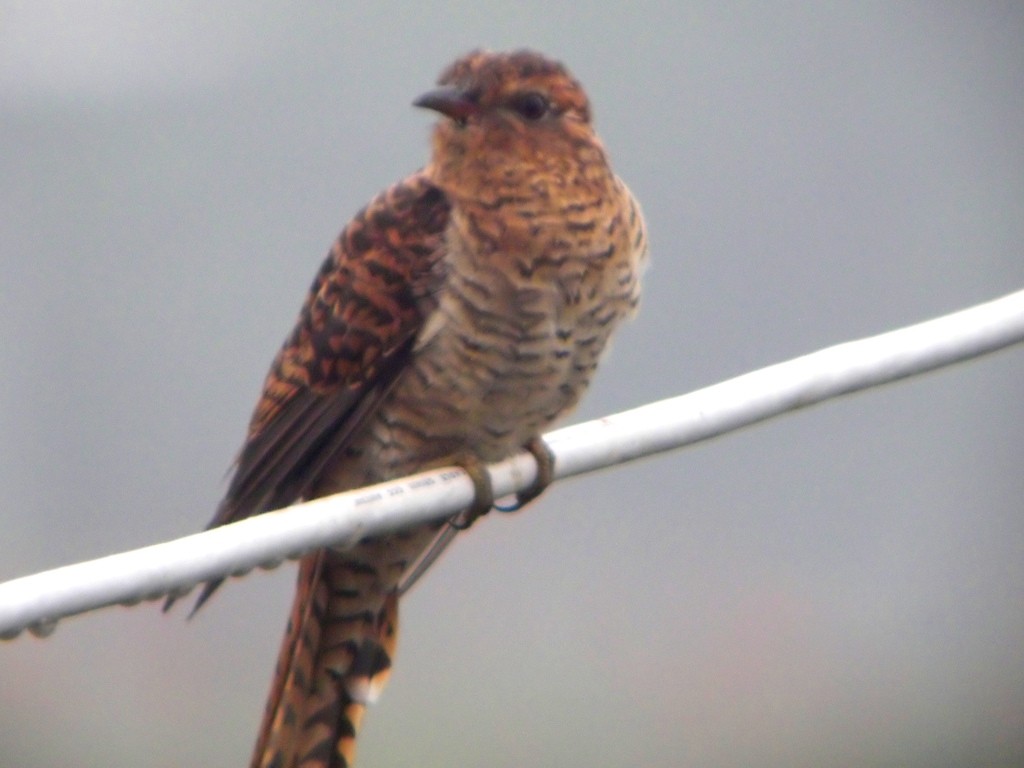Plaintive Cuckoo
A species of Oriental and Australasian Cuckoos Scientific name : Cacomantis merulinus Genus : Oriental and Australasian Cuckoos
Plaintive Cuckoo, A species of Oriental and Australasian Cuckoos
Botanical name: Cacomantis merulinus
Genus: Oriental and Australasian Cuckoos
Content
Description General Info
 Photo By CharlesLam , used under CC-BY-SA-2.0 /Cropped and compressed from original
Photo By CharlesLam , used under CC-BY-SA-2.0 /Cropped and compressed from original Description
The plaintive cuckoo is fairly small, measuring about 21–24 cm (8.3–9.4 in) long. The adult male is grey-brown above and orange below with a grey head, throat and upper breast. The tail feathers have white tips. The legs and feet are yellow, the eye is red and the bill is black above and yellow below. The adult female is sometimes similar to the male but often occurs in a "hepatic" morph. This form is reddish-brown above with dark bars. The underparts are paler with fainter barring. There is a pale stripe over the eye and the tail has dark bars along its whole length. Juvenile birds are similar to hepatic females but are paler and have dark streaks rather than bars on the crown and throat. The male has several plaintive whistling calls. These include an ascending series of three-note phrases and a series of 11 or 12 descending notes. 
Size
24 cm
Nest Placement
Tree
Feeding Habits
Plaintive Cuckoo predominantly feeds on insects, notably hairy caterpillars and beetles, but also consumes fruit. Plaintive Cuckoo actively forages within foliage canopies, displaying restlessness while hunting mainly softer prey items with unique chasing techniques.
Habitat
Plaintive Cuckoo is adaptable, thriving in tropical and subtropical habitats such as open woodlands, secondary forests, and lowland rainforests. It resides in wetland ecosystems, including swamp forests and mangroves, and is versatile enough to live in agricultural areas, plantations, and even urban landscapes. Its tolerance to different vegetation types showcases its ecological flexibility.
Dite type
Insectivorous
General Info
Feeding Habits
Bird food type
Distribution Area
There are four subspecies. The nominate form C. m. merulinus is found in the Philippines where it is common on many of the larger islands. C. m. querulus is the most widespread form, occurring in north-east India, Bangladesh, southern China, Indonesia, Myanmar, Thailand, Cambodia, Laos and Vietnam. It is a summer visitor to most of its Chinese range, migrating south for the winter. C. m. threnodes is found in the Malay Peninsula, Sumatra and Borneo while C. m. lanceolatus occurs in Java, Bali and Sulawesi. The grey-bellied cuckoo (C. passerinus) was formerly classified as a subspecies of the plaintive cuckoo but is now often treated as a separate species. 
Species Status
Not globally threatened.